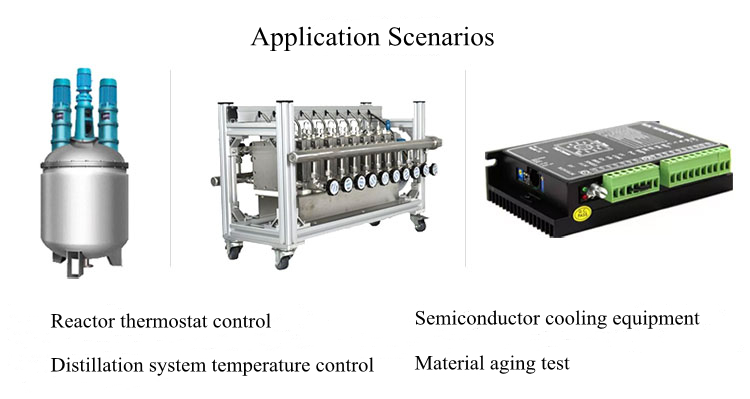How to solve the failure of the automatic temperature control system of the reactor?
The performance of the automatic temperature control system of the reactor is very important. Once you encounter a failure that cannot be started, you must solve it as soon as possible, otherwise the uncontrollable temperature will affect the reaction materials.

If you encounter a compressor startup failure in the automatic temperature control system of the reactor, first check whether the power supply is normal. The power supply voltage should not exceed or be lower than the rated voltage of the unit. Commonly used voltages are 3-phase 380V and single-phase 220V. When the voltage is too low or too high, the automatic temperature control system of the reactor cannot be started. For compressor units with a water system, carefully check whether there is water in the cooling water system and the chilled water system, whether the water pressure is normal, and whether the cooling water and chilled water pipeline systems are unblocked.
Check whether the various pressure gauges, thermometers, flow meters, solenoid valves, relays, and energy regulating valves of the automatic temperature control system of the industrial reactor are in good condition. Check the transmission device, if it is driven by a belt, whether its various protective devices are completely reliable, and whether all kinds of wrong equipment and protective equipment are complete and effective. Check whether the various valves of the high-pressure system and low-pressure system of the industrial reactor automatic temperature control system are in the correct switching state when starting or running.
Check the crankcase lubricant. The oil level should not be lower than or higher than the indicated oil level. If the lubricating oil is insufficient, add enough lubricating oil of the same specification and model. Check whether the refrigerant system of the automatic temperature control system of the industrial reactor is leaking, and whether the lubricating oil system is leaking. Check whether the liquid level of the liquid storage tank is normal, and the liquid level should be kept between one-third and two-thirds.
Next, follow the steps to troubleshoot, first check the main circuit. For example, whether the power supply has electricity, whether the voltage is normal, whether the fuse has been blown due to starting overload, whether the air switch is tripped, whether the switch contacts are good, and whether the power supply lacks phase.

Observe the voltmeter and ammeter when starting. When the automatic temperature control system of the reactor is not equipped with an ammeter or voltmeter, a multimeter or a tester can be used to check the power supply. When the power supply voltage is too low, the compressor cannot be started. For piston refrigeration compressors, whether the large-end bearing bushes and the curved sleeves of the connecting rods hold shafts. These can be caused by the excessively high exhaust temperature during the previous operation, or it can be caused by the coking of the lubricating oil, which makes the cylinder and the piston stick together, making the compressor unable to start. Check differential pressure relay and high and low voltage relay. When the oil pressure of the compressor is abnormal, the compressor can be stopped.
At the same time, when the compressor discharge pressure and suction pressure are abnormal, neither can start or the compressor will stop running soon after it has started. Check whether the amount of chilled water, cooling water, and water temperature are normal. If the water volume is small and the water temperature is high, it will cause the condensing pressure to rise sharply and the evaporation temperature to drop rapidly. Due to the action of the unit protection facilities, the unit often shuts down quickly. Check whether the relevant solenoid valves and regulating valves are out of order, and whether they are opened or closed as required. Check whether there is a leakage of working fluid in the temperature sensing bag of the temperature relay, or the adjustment is wrong.
Related recommendations
-
Combination of heater and chiller for melting mixing process
856In the process of molten mixing, the combination of heater and cooler is used to achieve precise temperature control of the mixed materials to meet specific process requirements. This type of combination equipment is commonly used in industrie...
View details -
Low temperature chiller unit in the production of PGA catalyst auxiliary materials
829Low temperature chillers play an important role in the production reaction process of polyglycolic acid (PGA) and its catalysts and additives. The synthesis and post-treatment process of polyglycolic acid often involve exothermic reactions, ...
View details -
Semiconductor refrigeration temperature control system accessories
1129In the evaporator, since the liquid evaporates in the evaporator of the semiconductor refrigeration temperature control system, the process from liquid to gas, due to the change of the load, some of the refrigerant may not be completely evaporated...
View details -
 LNEYA Industrial Chillers Manufacturer Supplier
LNEYA Industrial Chillers Manufacturer Supplier












